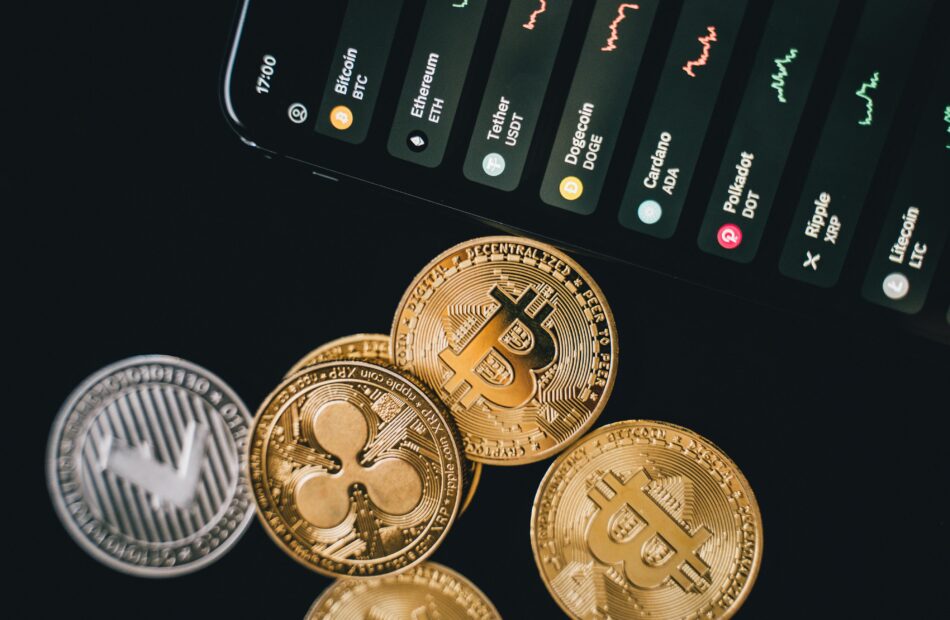How to stake Solana (SOL) in 2025: A step-by-step guide for beginners
Key takeawaysStaking Solana allows you to earn passive income through staking rewards while participating in network governance.There is no minimum requirement for staking Solana, but the practical minimum is around 0.01 SOL.All you need to start staking Solana is a SOL-compatible wallet.Staking is considered one of the safer ways to participate in crypto ecosystems.Solana is a blockchain network known for its fast transaction speeds and extensive ecosystem of decentralized applications (DApps). It also combines the proof-of-stake (PoS) and proof-of-history (PoH) consensus mechanisms, allowing you to stake its native currency, SOL (SOL), to earn rewards. This Solana staking guide walks you through the Solana staking process and explains why staking could be a smart move, especially if you’ve been wondering how to earn passive income with SOL.What is Solana staking?Solana staking consists of locking SOL into a cryptocurrency wallet. The process rewards you in the following ways:Staking rewards: You earn rewards for staking SOL — a percentage based on how much you’ve staked, Solana’s current inflation rate (which fluctuates and is set to decrease every year), the total amount of SOL staked on the network, and how long you’ve been staking overall.Governance: Staking gives you a say in governance, allowing you to vote on proposals that shape the Solana network. This approach prioritizes those with the largest investments, assuming they’ll act in the network’s best interest.Network security: Staking increases security to create a stable investment environment. By staking, you’re directly contributing to Solana’s health and longevity. That said, if a few wallets stake large amounts, one could argue they’re centralizing the network.If you earn rewards staking SOL, they’re paid out every two days — a period known as an epoch. When staking SOL, you’re delegating funds to a Solana representative (a validator.) Validators process transactions, produce blocks, and vote on network proposals. It’s essential to choose a validator that aligns with your vision for Solana, as they’ll be voting in your stead, much like an elected official in traditional governments.Validator votes are stake-weighted. The more stake a validator has, the more weight their vote carries. Solana validator vs. delegator: By delegating funds to a validator, you become a delegator. The validator’s job is to vote in the network’s best interest. It’s your job to choose reputable validators that keep the network safe. Did you know? Solana is one of the fastest blockchains in terms of transactions per second (TPS). It currently averages around 1,128 TPS, with a theoretical max of 65,000 TPS. Staking Solana for beginnersThere are a few things to consider as you prepare to stake Solana.Understanding staking methodsOn the surface, staking is quite simple; however, there are actually two staking methods — each affects your SOL liquidity.Liquid staking: Earn rewards while retaining control of your SOL’s liquidity. When you liquid stake, you receive liquid staking tokens (LSTs) equivalent to the amount of SOL you stake. You can use those LSTs in Solana’s decentralized finance (DeFi) applications as you would if you weren’t staking funds.Native staking: Native staking is the original method that locks your funds away, allowing you to earn rewards and participate in governance. However, you cannot use your funds without pulling them out via the unstaking process. This process is beginner-friendly but limits what you can do with your SOL.The difference between the two is flexibility. Native staking is less flexible but easier for beginners, while liquid staking retains your liquidity for use in DeFi and other applications.Solana staking tax 2025In the United States, Solana staking rewards are subject to income and capital gains tax.Income tax: You’re required to pay income tax on the value of SOL at the moment you unstake it. You also pay income tax on staking rewards when you gain the ability to withdraw them.Capital gains tax: You’re required to pay capital gains tax once you sell or convert that SOL.How to stake SolanaNow, let’s get into the Solana staking tutorial. Choose a Solana walletFirst, you need a wallet to store and stake your SOL. Most Solana wallets have built-in staking capabilities. This guide uses the Phantom Wallet for demonstration purposes.Download Phantom Wallet from its official website by clicking the “Download” button.Next, click “Create a new wallet.”You’ll be asked to continue with an email or a seed phrase wallet. Click “Create a seed phrase wallet.”Enter a password, and proceed to the recovery phrase screen. Write down your recovery seed phrase on piece of paper, check the confirmation box, and click “Continue.”Create a username, click “Continue,” and you’ll have created a Solana wallet. Fund the walletFund Phantom with SOL by either transferring SOL from another wallet or buying it with a debit/credit card via the “Buy” button.Phantom partners with companies such as Robinhood or Topper to facilitate card payments, allowing you to buy from within the wallet interface.After funding your wallet, it’s time to start staking.Stake your SolanaOpen your token list and click on “Solana.”Select “Start earning SOL.”Now, choose between “Liquid Staking” or “Native Staking.”Liquid staking is typically done via a third-party provider. Phantom integrates with Jito’s liquid staking platform, enabling you to receive JitoSOL LSTs when you liquid stake.If you choose to liquid stake, Phantom will detail your estimated annual percentage yield (APY) and how much JitoSOL you’ll receive in return for staking.JitoSOL will appear in your token list.JitoSOL will appear in your token list.If you choose native staking, you must commit to a validator. Phantom will list validators in order of how much SOL is staked to them and their estimated APY.Select a validator, enter how much SOL you’d like to stake, and click “Stake.” The network will create your staking account, and you’ll start earning rewards in a few days.Congratulations, you’re successfully staking SOL.Did you know? Validators who act out of turn or experience significant downtime will have their rewards slashed, also reducing the rewards of those who stake with the validator. How to unstake SolanaWhether you choose liquid or native staking, here’s how to unstake your funds. You might unstake if:You want to convert SOL: If you want to swap or sell your SOL, you must unstake the funds first.You want to stake elsewhere: If another network catches your eye, you’ll have to unstake your Solana funds to transfer them for staking on another network.Validators act up: If your validator acts outside the network’s best interest, you may want to unstake and delegate to another validator.Unstake natively staked tokensTo unstake natively staked tokens, click on “Solana” in your token list.Next, click on “Your stake.”Select the validator you want to unstake from and click “Unstake.” Then, select “Withdraw Stake” to pull the funds back into your wallet. The validator will show “Inactive” once you’ve unstaked.Unstake LSTsTo unstake your LSTs, select them in your token list.Click “More” in the options list, then select “Unstake.”If you’re using Jito as your LST provider, clicking unstake will take you to Jito’s platform. Here, you have two options: unstake immediately or delayed unstaking.Unstake immediately: Immediate unstaking costs a small fee, based on the amount you are unstaking. You can pay additional fees to prioritize your transaction or tip validators. Finally, you can adjust your slippage tolerance.Delayed unstaking: Delayed unstaking can range from one day to a week, depending on network congestion, but you pay a much lower fee. You also don’t have to account for slippage, as the network won’t prioritize your transaction.Choose whichever option works best for you, and click “Unstake SOL.” The funds will appear in your wallet.Did you know? You can stake Solana with as little as 0.01 SOL, making it one of the most accessible PoS blockchain networks.Is Solana wallet staking safe?Staking Solana is relatively safe, but even if you know how Solana staking works, there are risks to be aware of:Market volatility: Solana is subject to market volatility as much as any other cryptocurrency. The value of your staked SOL can fluctuate based on market conditions.Validator behavior: Validators can act out of favor with the network and may experience “slashing.” Slashing penalizes the validator’s rewards, which affects your rewards as well. Your initial investment remains safe, however.Cyberthreats: Blockchain networks are exposed to bad actors 24/7, meaning they can be vulnerable to hacks at any time, putting your funds at risk.Past downtime: Solana has had various outages over the years, often due to congestion. While this doesn’t necessarily mean your funds are at risk, bad actors could target the network during its weak moments.So, while staking on Solana offers potential rewards, it’s important to understand that staking always carries risk. As with any investment, there’s a possibility of loss, so it’s crucial to evaluate your risk tolerance and take necessary precautions.This article does not contain investment advice or recommendations. Every investment and trading move involves risk, and readers should conduct their own research when making a decision.
WazirX confirms restart on track as it awaits sanction hearing in May
Indian crypto exchange WazirX, which was hacked for $234 million last July, says it is on track to restart its operations pending a May 13 court decision on its restructuring proposal and user compensation plan. If Singapore’s High Court gives the nod, WazirX parent company Zettai PTE Ltd can restart the exchange and begin its compensation scheme for affected users within 10 business days, WazirX said in an April 21 update to X.WazirX lost $234 million of crypto from a Safe Multisig wallet mid-July 2024 in an attack since attributed to North Korean hackers, forcing them to temporarily pause all crypto and Indian rupee withdrawals on the platform.Source: WazirX“Zettai has completed all prior required steps, and the next key step is the sanction hearing, which the Singapore High Court has scheduled for May 13, 2025,” the firm said.“This hearing is essential for the Scheme to become legally effective. While we’ve worked to stay aligned with the previously shared timelines, court proceedings operate independently, and we respect that process.”On April 7, more than 90% of the voting creditors voted in favor of the platform’s post-hack restructuring plan, which involved the issuance of recovery tokens.The tokens would be repurchased using net profits from the exchange and could yield 75% to 80% of users’ account balances at the time of the cyberattack.WazirX had warned that repayments from the $235 million hack could be delayed until 2030 if creditors didn’t approve its proposed restructuring plan. Singapore’s High Court gave Zettai permission to convene a creditors’ meeting to propose a possible remedy for users and a plan to get the exchange back online in January.Related: Bybit CEO: Two-thirds of Lazarus-hacked funds remain traceable“We understand the eagerness around the platform restart and truly appreciate your continued patience,” WazirX said.”Since the beginning, we have communicated that the first distribution and restart would occur within the April-May 2025 window.”Supreme Court of India dismisses WazirX users petition A separate April 16 court judgment from the Supreme Court of India dismissed a petition filed by 54 victims of the hack, who sought legal action against WazirX, Shetty, Binance and custody provider Liminal. Petitioners also asked the court to audit WazirX’s accounts. Justices B.R. Gavai and Augustine Masih rejected the petition, saying the court could not rule on the case because it was a matter of crypto policy, which the court doesn’t have the authority to rule on. Gavai and Masih advised the petitioners to approach a regulatory body or other relevant authority to hear the matter instead.Magazine: Uni students crypto ‘grooming’ scandal, 67K scammed by fake women: Asia Express
Paul Atkins’ loosely linked RSR token rises 13% after Coinbase listing
A governance token for the Reserve Protocol stablecoin, launched by a firm previously advised by sworn-in SEC Chair Paul Atkins, has surged over 13% after crypto exchange Coinbase announced that it will list the token. Atkins was an early adviser for the stablecoin firm around the time it launched in 2019, according to Reserve Protocol’s CEO Nevin Freeman. He is no longer consulting at the firm.The Reserve Rights (RSR) token is the governance token aimed at ensuring the stability of the Reserve Protocol’s stablecoin, Reserve Dollar (RSV). In an April 21 X post, Coinbase said it would list the RSR token on the Ethereum layer-2 network Base on April 22 at 9 am Pacific Time (4 pm UTC). Source: Coinbase AssetsAtkins news bumps up RSR’s price even furtherThe Coinbase listing, combined with the news of Atkins officially being sworn in as SEC chair on April 21, pushed the token up 13.6% to a near two-month high of $0.00835 on April 22, CoinGecko data shows. Prior to Atkins being sworn in, RSR had already risen double digits to around $0.0081.It is currently the 143rd largest coin by market capitalization at $464 million.Atkins said he will be focused on ensuring the US is the “best and most secure place in the world to invest and do business,” while ensuring sufficient consumer protection measures are in place.It comes two weeks after the Senate confirmed Atkins as SEC chair in a 52-44 vote on April 9. Related: Crypto in a bear market, rebound likely in Q3 — CoinbaseAtkins takes over from Mark Uyeda, who has been the SEC’s acting chair since Jan. 20, when former chair Gary Gensler stepped down.Since US President Donald Trump returned to office, the SEC created a Crypto Task Force to consult with the industry on regulation and dropped several crypto-related investigations and enforcement actions undertaken by the Gensler-led SEC.Atkins is expected to take a more crypto-friendly approach, telling a Senate confirmation hearing in March that a priority of his at the SEC would be to provide a firm regulatory foundation for crypto assets through a “rational, coherent and principled approach.” Magazine: Memecoin degeneracy is funding groundbreaking anti-aging research
Paul Atkins, nominated by Trump, has been sworn in as SEC chair
Paul Atkins has officially been sworn in as the 34th chairman of the Securities and Exchange Commission.The April 21 announcement comes nearly two weeks after Atkins’ position was confirmed by the US Senate in a 52-44 vote on April 9.“I am honored by the trust and confidence President Trump and the Senate have placed in me to lead the SEC,” Atkins said in a statement.“As I return to the SEC, I am pleased to join with my fellow Commissioners and the agency’s dedicated professionals to advance its mission to facilitate capital formation; maintain fair, orderly, and efficient markets; and protect investors.”Atkins is widely expected to lead a more crypto-friendly SEC than former chair Gary Gensler under the Biden administration.Atkins also previously served as an SEC commissioner between 2002 and 2008 under former President George W. Bush.His confirmation was reportedly delayed due to additional financial disclosures that he needed to file as a result of marrying into a billionaire family. Some of those financial disclosures reportedly revealed that Atkins owned up to $6 million worth of crypto-related investments, including crypto custody platform Anchorage Digital and blockchain tokenization platform Securitize.The announcement means Atkins has effectively taken over from acting chair Mark Uyeda, who has helped the SEC establish a Crypto Task Force to strengthen rapport between the agency and industry players over the last few months.The securities regulator has also dismissed several high-profile crypto-related investigations and enforcement actions undertaken by the Gensler-led SEC, including cases involving Coinbase, Consensys, Gemini and Uniswap.Related: Crypto industry is not experiencing regulatory capture — AttorneyMagazine: SEC’s U-turn on crypto leaves key questions unansweredThis is a developing story, and further information will be added as it becomes available.
US lawmaker targets crypto investors using Puerto Rico as a tax haven
A member of the House of Representatives has proposed legislation aimed at stopping investors from using the US territory of Puerto Rico as a crypto tax haven.According to an April 21 Bloomberg report, New York Representative Nydia Velázquez introduced the Fair Taxation of Digital Assets in Puerto Rico Act, a bill that could change existing laws in the territory to require certain investors to pay local and federal taxes on capital gains, including from digital assets. The legislation would reportedly add text to Puerto Rico’s Internal Revenue Code, making income from cryptocurrencies subject to federal tax laws.“This wave of crypto investors hasn’t helped Puerto Rico’s recovery or strengthened the local economy,” said Rep. Velázquez, according to Bloomberg. “Instead, it’s driven up housing costs, pushed out local residents, and added pressure to an island where nearly 40% of people live in poverty — all while costing the federal government billions in lost tax revenue.”Puerto Rico is well known as a tax haven for many people in the crypto industry since the territory began allowing exemptions in 2012 under Act 20 and Act 22 of the Tax Incentives Code — later consolidated as Act 60. The island has attracted investors, including Pantera Capital founder Dan Morehead, venture capitalist Brock Pierce, and online influencer Logan Paul.Related: NFT trader faces prison for $13M tax fraud on CryptoPunk profitsMissing out on crypto tax revenueRep. Velazquez’s office reportedly said Puerto Rico could lose roughly $4.5 billion in revenue from 2020 to 2026 due to the tax incentives in place. In contrast, Puerto Rico Governor Jenniffer González-Colón proposed extending Act 60, set to expire in 2035, to the end of 2055, but requiring applicants to be subject to a 4% capital gains tax rate, smaller than the typical range up to 37% in the US.It’s unclear whether the legislation proposed by Rep. Velazquez, a Democrat, would have enough political support to pass in the Republican-controlled House or Senate. Both chambers will likely consider floor votes for stablecoin legislation and a crypto regulatory framework in the coming months. Magazine: XRP win leaves Ripple and industry with no crypto legal precedent set
Astra Fintech commits $100M for Solana growth in Asia
Astra Fintech, a global blockchain payments provider, has launched a $100 million fund to support the Solana ecosystem’s growth throughout Asia, according to an April 21 announcement. Through the fund, Astra Fintech plans to deploy capital to accelerate projects and form partnerships with developers, companies, and regulators. The fund’s base of operations will be in South Korea, a country Solana’s venture arm invested in after the collapse of the Terra ecosystem in 2022.The fund will focus on projects and developers working on PayFi solutions — a conglomeration of systems that use blockchain technology to facilitate payments. Astra’s main suite of products attempts to blend traditional finance with digital currencies.According to data from Electric Capital, Solana and Solana Virtual Machine (SVM) blockchains are currently within the top 10 blockchains for developer activity, only behind Ethereum.In 2021, Solana created a $5 million development fund to spur projects in Southeast Asia. The region is a hotspot for Web3 games, a crypto use case that has proliferated on Solana due to the blockchain’s fast speeds and low transaction costs.Solana, with its ups and downsThe Solana ecosystem has had quite the ride in 2025. Its native token, Solana (SOL), rose to an all-time high of $293.31 on Jan. 19, two days after US incoming President Donald Trump launched a memecoin on the network. It trades at $136.61 at this writing, a fall of 53.4% since then. However, crypto executives and companies continue betting on the Solana ecosystem. On April 7, a group of former Kraken executives acquired Janover, aiming to transform the real estate firm into a de facto Solana treasury. Just weeks later, Upexi — a brand management and supply chain company — saw its shares surge 630% on April 21 after announcing a similar strategy. Meanwhile, Canada approved SOL staking in early April, and ARK Invest has since added exposure to Solana funds through its tech-focused ETFs.Magazine: X Hall of Flame: Solana ‘will be a trillion-dollar asset’ — Mert Mumtaz
Coinbase Derivatives lists XRP futures
Coinbase has listed futures contracts for the XRP token on its US derivatives exchange, the cryptocurrency platform said on April 21.The contracts are overseen by the US Commodity Futures Trading Commission (CFTC) and offer traders “a regulated, capital-efficient way to gain exposure to one of the most liquid digital assets,” the company said in a post on the X platform.Coinbase’s XRP (XRP) futures include standard contracts representing 10,000 XRP and retail-oriented “nano” contracts representing 500 XRP each, or approximately $1,000 as of April 21, according to regulatory filings. The contracts are the latest crypto futures to launch on Coinbase’s derivatives exchange, which also features Solana (SOL) and Hedera (HBAR) futures contracts, both added in February. Source: CoinbaseRelated: Coinbase in talks to buy derivatives exchange Deribit: ReportBurgeoning market segmentSince 2024, US exchanges — including Coinbase, Robinhood and Chicago Mercantile Exchange — have been expanding crypto futures offerings in response to strong demand from retail and institutional investors. Futures contracts are standardized agreements to buy or sell an underlying asset at a future date. They are popular for hedging and speculation because they let traders take long and short positions, often with leverage. Coinbase lists derivatives tied to some 92 different assets on its international exchange and approximately two dozen in the US, according to its website. Its US-traded products include contracts tied to memecoins, such as Dogecoin (DOGE), and commodities, such as oil and gold. Coinbase’s stock performance vs. the S&P 500. Source: JPMorganIn December, Coinbase said derivatives trading volumes soared roughly 10,950% in 2024. The exchange is reportedly in talks to buy Deribit in a bid to expand its derivatives footprint.Coinbase launched its US derivatives exchange in 2022, bringing cryptocurrency futures — including retail-oriented “nano” contracts — to tens of millions of US users.Launched in 2012, XRP Ledger is among the oldest blockchain networks and specializes in payments and decentralized finance (DeFi) applications for institutions. As of April 21, XRP’s market capitalization stands at approximately $120 billion, according to CoinMarketCap. In March, the US Securities and Exchange Commission (SEC) dropped a years-long lawsuit against XRP Ledger’s developer, Ripple, for alleged securities law violations.Magazine: Crypto ‘more taboo than OnlyFans,’ says Violetta Zironi, who sold song for 1 BTC
Investors sue Meteora and VC firm, alleging fraud
A group of investors has filed a class-action lawsuit against decentralized cryptocurrency exchange Meteora, alleging the firm was involved in manipulating the launch and market price of the M3M3 token.In an amended complaint filed on April 21 in the US District Court for the Southern District of New York, the plaintiffs allege that venture capital firm Kelsier Labs, Meteora, and four current or former executives “intentionally misrepresented” information in the M3M3 launch in December 2024. The investors claimed that they suffered at least $69 million in losses between December 2024 and February 2025 after the parties presented “trusted leaders in the Solana ecosystem” as being behind the token launch, rather than a “blatant fraud” in which sales were manipulated to artificially inflate the price.“This artificially-inflated valuation communicated highly misleading information to non-insider investors, who reasonably relied on Defendants’ representations that the $M3M3 launch was fully accessible to the public and conducted in a transparent manner fair to non-insider investors, and thus reasonably relied on $M3M3 market price as a meaningful measure of its value,” the complaint reads. “The post-launch price spike also served to corroborate Defendants’ aggressively-marketed, but misleading, assertions that $M3M3 had intrinsic value and a comparatively low risk profile.”Class-action lawsuit against Meteora, Kelsier Labs, and current and former executives. Source: PACERThe lawsuit is one of many involving different crypto firms that have alleged fraud through violations of US securities laws. Though the US Securities and Exchange Commission (SEC), under acting chair Mark Uyeda since US President Donald Trump took office, has scaled back or dismissed many enforcement actions involving digital assets, the agency said in February it still intended to pursue cases against fraudulent token projects.The investors added:“Together, Defendants designed the $M3M3 Token and planned its launch on Meteora in a manner intended to illicitly enrich themselves at the expense of the unsuspecting investing public.”Related: Meteora says co-founder’s X account hacked after ‘parasitic’ memecoin postMemecoins in the Solana ecosystemMeteora has been tied to the launch of several high-profile yet controversial tokens, including those for Trump (TRUMP), his wife Melania (MELANIA), Libra (LIBRA), and online influencer Haliey Welch (HAWK). According to the lawsuit, the firm “purported to offer a comprehensive solution to the problems in the memecoin investment market” with the launch of M3M3. The defendants in the case allegedly attempted to distinguish the token from other notable memecoins by highlighting the “legitimacy and trustworthiness” through the involvement of Meteora co-founder Ben Chow and the platform.Kelsier Ventures, KIP Protocol, and Meteora face a similar class-action lawsuit filed in New York in March over LIBRA allegedly being launched in a “deceptive, manipulative and fundamentally unfair” manner. Argentine President Javier Milei briefly promoted the token over social media after his sister reportedly received payments from the project.Magazine: Memecoin degeneracy is funding groundbreaking anti-aging research








